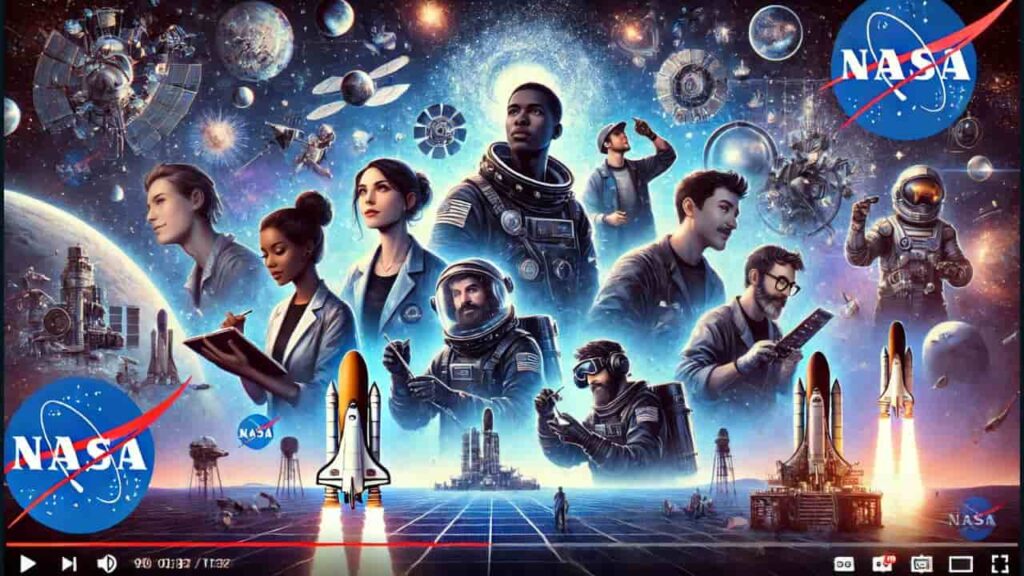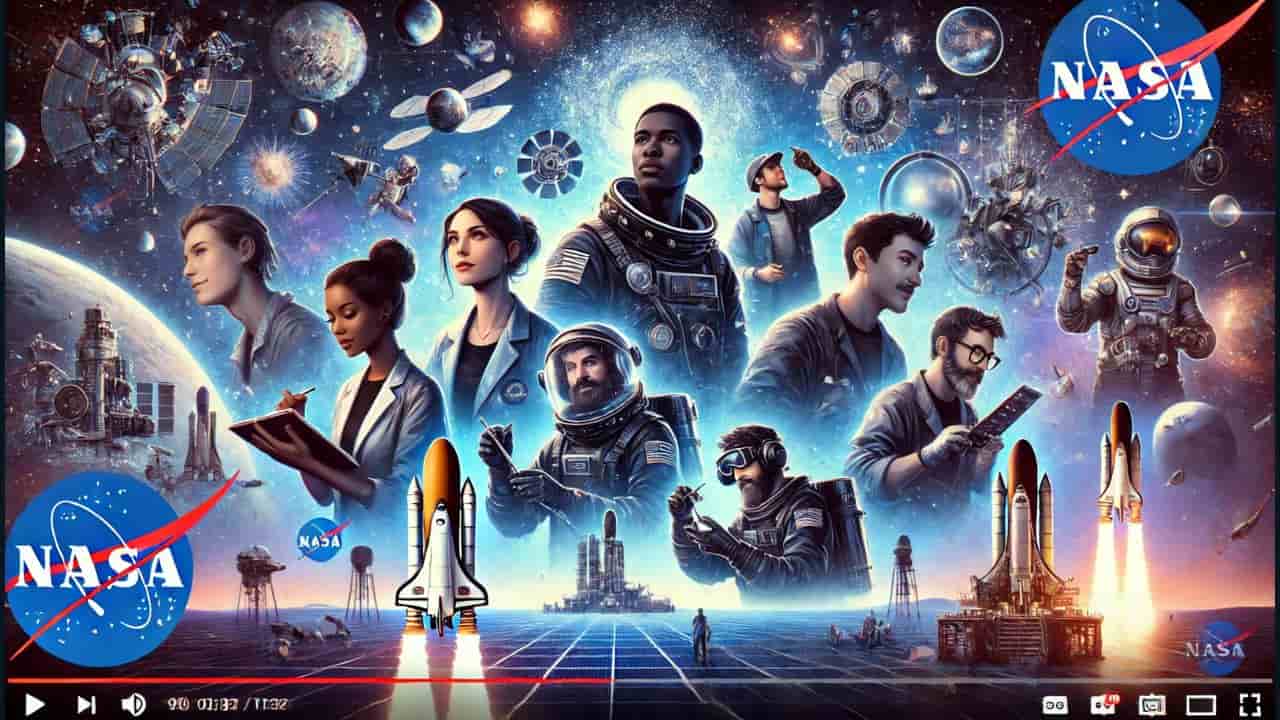NASA, Nancy Grace Roman Technology Fellowship, 2023 Roman Fellows, astrophysics, space exploration, NASA technology, young scientists, NASA fellowship, astrophysics research, exoplanet imaging, cosmic microwave background, ultraviolet instrumentation, high-energy astrophysics
Discover how NASA is propelling the future of space exploration by awarding the prestigious 2023 Nancy Grace Roman Technology Fellowships to five early-career researchers in astrophysics. Learn about the innovative technologies and groundbreaking research that these fellows are developing, which will shape the next generation of space missions.
NASA has once again demonstrated its commitment to nurturing the future of astrophysics through the awarding of the prestigious Nancy Grace Roman Technology Fellowships (RTF) to five early-career researchers. These fellowships, awarded for the class of 2023, aim to support the advancement of innovative technologies that can drive the exploration of the universe. The fellowship not only provides a platform for these young scientists to develop groundbreaking technologies but also equips them with the necessary skills to become principal investigators of future astrophysics missions.

The Importance of the Nancy Grace Roman Technology Fellowship
The Nancy Grace Roman Technology Fellowship is a cornerstone initiative in NASA’s strategy to cultivate the next generation of leaders in astrophysics. Named in honor of Dr. Nancy Grace Roman, the first female executive at NASA and often referred to as the “Mother of Hubble,” the fellowship is a tribute to her pioneering work in establishing NASA’s first astronomical program and her foundational role in planning the Hubble Space Telescope. The fellowship is more than just financial support; it is an investment in the future of astrophysics, providing early-career researchers with the tools and opportunities they need to develop into leaders in their field.
Since its inception in 2011, the RTF program has been instrumental in fostering the careers of 31 researchers, all of whom are still active in astrophysics or planetary mission development. With the addition of five new fellows in 2023, the total number of researchers awarded this fellowship rises to 36. These fellows are not just participants in the program; they are torchbearers for the future of space exploration, pushing the boundaries of what is possible with new technologies and innovative ideas.
The 2023 Fellowship Recipients
The 2023 cohort of Nancy Grace Roman Technology Fellows represents a diverse group of researchers, each bringing a unique perspective and expertise to the field of astrophysics. Their work spans a range of cutting-edge technologies, from ultraviolet instrumentation to high-contrast imaging techniques, all aimed at deepening our understanding of the universe.
Nicholas Kruczek: Pioneering Ultraviolet Instrumentation
Nicholas Kruczek, an instrument engineer at the Laboratory for Atmospheric and Space Physics (LASP) at the University of Colorado, Boulder, is one of the five new fellows. Hailing from Orchard Park, New York, Kruczek has focused his research on ultraviolet (UV) instrumentation and sounding rockets, with a particular emphasis on diffraction grating development. This fellowship is crucial for Kruczek, as it allows him to keep his research team intact, fostering an environment where undergraduate and graduate students can learn and grow under his mentorship. Kruczek’s passion for the physics of light and its interaction with optics has driven his career in astrophysical instrumentation, and this fellowship is a significant step in his journey to becoming a leader in the field.
Drew Miles: Innovating Grating Spectrographs
Drew Miles, a research assistant professor at the California Institute of Technology, has a research focus on developing and demonstrating technologies for space-based grating spectrographs. His work involves the full life cycle of technology development, from conceiving new spectrograph designs to implementing these designs into astronomy instruments. Originally from Marshalltown, Iowa, Miles’s career in astrophysics was sparked during his undergraduate years when he took elective physics and astronomy courses. His fascination with the nature and evolution of the universe, combined with hands-on experimental research, led him to pursue a career in astrophysics. The fellowship is particularly meaningful to Miles, as it provides the necessary support to further his research program and advance impactful instrumentation for future NASA missions.
Johanna Nagy: Exploring the Cosmic Microwave Background
Johanna Nagy, the Warren E. Rupp Assistant Professor of Physics at Case Western Reserve University, is another recipient of the 2023 fellowship. Her research is centered on cosmology, specifically studying the evolution and composition of the universe through precise measurements of the Cosmic Microwave Background (CMB). Nagy’s work involves building instruments to measure the polarization of the CMB and analyzing the resulting data, with several of her current projects utilizing NASA’s stratospheric balloons. Growing up in Lompoc, California, Nagy’s interest in space began in middle school, and her love for experimental work was solidified during her college years. The fellowship will enable Nagy to expand her research group and lab capabilities, allowing her to continue mentoring students and helping them pursue their own career paths.
Dustin Swarm: Advancing High-Energy Astrophysics
Dustin Swarm, a postdoctoral research scholar in the Department of Physics & Astronomy at the University of Iowa, is focused on the design and fabrication of focusing optics for high-energy astrophysics investigations. Swarm’s work aims to develop high-performance focusing optics for the hard X-ray to soft gamma-ray regime, which could enable deeper investigations into phenomena such as accreting compact objects or sources of electron-positron annihilation. Originally from Greenville, Illinois, Swarm’s journey to astrophysics was unconventional; he initially pursued a career in Spanish education before returning to his love of science and mathematics. The Roman Technology Fellowship is a significant milestone in Swarm’s career, providing validation and support as he builds his research foundation and mentors future astrophysicists.
Kyle Van Gorkom: Imaging Exoplanets with Advanced Techniques
Kyle Van Gorkom, an assistant research professor at Steward Observatory, University of Arizona, specializes in high-contrast imaging techniques and wavefront control to directly image exoplanets. Growing up in Tucson, Arizona, Van Gorkom’s interest in astrophysics was piqued during a college philosophy of science course, which led him to pursue a deeper understanding of physics. His research now focuses on developing technologies that can image exoplanets with unprecedented clarity, contributing to the broader effort to discover and study planets beyond our solar system. The fellowship will allow Van Gorkom to establish an independent research program, set up a laboratory for technology development in coronagraphy, and mentor the next generation of instrument builders.
The Impact of the Fellowship on Astrophysics and Beyond
The Nancy Grace Roman Technology Fellowship is more than just an award; it is a catalyst for innovation and discovery in astrophysics. By supporting early-career researchers, NASA is not only advancing the development of new technologies but also ensuring that the next generation of scientists is equipped to lead future missions that will expand our understanding of the universe. The 2023 cohort of fellows is poised to make significant contributions to their respective fields, and their work will undoubtedly have a lasting impact on the future of space exploration.
As NASA continues to push the boundaries of what is possible in space exploration, the importance of fostering new talent cannot be overstated. The Nancy Grace Roman Technology Fellowship is a vital part of this effort, providing a platform for young scientists to innovate, explore, and ultimately lead the way in the quest to understand the cosmos. With each new class of fellows, the legacy of Dr. Nancy Grace Roman lives on, inspiring future generations to reach for the stars and beyond.
Read More
- NASA Citizen Scientists Discover Hypervelocity Star Escaping Milky Way at 1 Million MPH
- NASA Citizen Scientists Discover Hypervelocity Star Zooming Out of the Milky Way
- NASAs Starliner Mission The Challenges of Returning Astronauts from Orbit
- NASAs VIPER Moon Rover Exploring New Partnership Opportunities for Lunar Exploration










